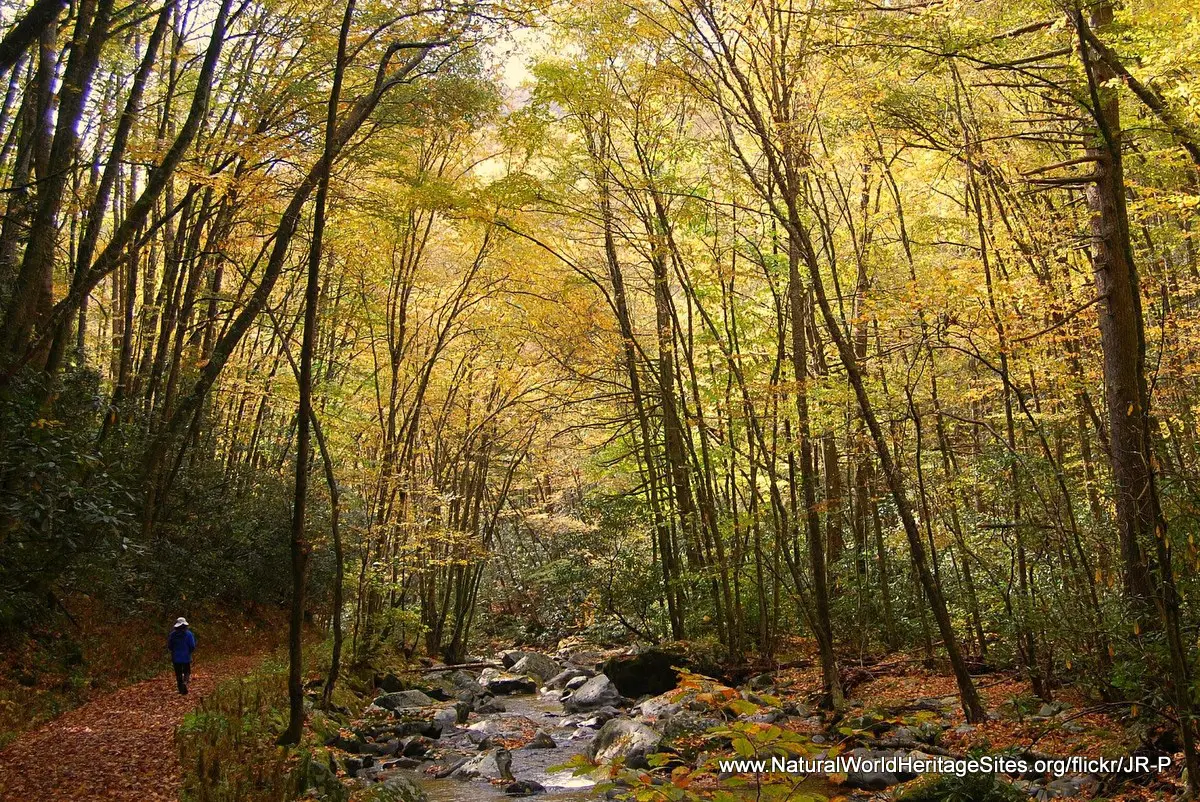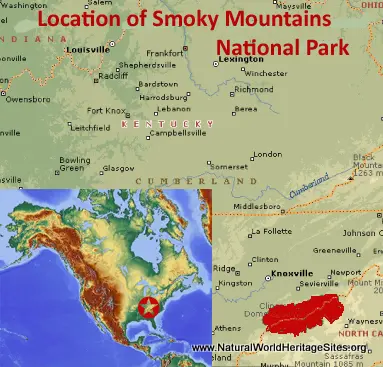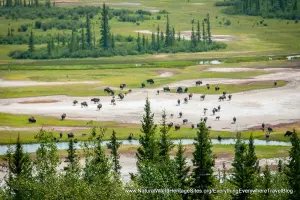EXPLORE Great Smoky Mountains National Park with this slideshow, check the location map and get all the facts and information below.
For slideshow description see right or scroll down (mobile). Click to view slideshow
Location and Values: The Great Smoky Mountains National Park is located in the Appalachian Mountains of east-central North America, straddling the border between the US states of North Carolina and Tennessee. It protects an exceptionally species-rich area of temperate forest that escaped glaciations during the last Ice Age, providing a refuge for thousands of species that survive to this day. It is an area of exceptional natural beauty, with far-reaching vistas, ever-changing seasonal colours within the landscape and foliage, clear running streams and waterfalls. Its exceptional value for biodiversity is illustrated by the very high number of native tree species found within the park’s comparatively small area (130 species, almost as many as the whole of Europe). The Great Smoky Mountains National Park also holds the world record for its exceptionally diverse salamander fauna (with 31 species, including 24 species of lungless salamander). Although much of the area has been subject to past logging, about 20% remains as virgin forest, offering unique vistas of primeval North America as it existed in the Pleistocene era (more than 12,000 years ago). This includes the largest block of virgin red spruce forest remaining on Earth. As a legacy of the period before the area was designated as a National Park (in 1934), it contains the finest collection of log buildings in the USA, which now punctuate the landscape and serve as visitor attractions. Importantly, the Great Smoky Mountains National Park is situated next to several adjoining protected national forests which help provide landscape connectivity and ecological resilience.
Conservation Status and Prospects. According to IUCN’s Conservation Outlook Assessment (2020) the conservation status of the Great Smoky Mountains National Park is ‘good, with some concerns’. The IUCN report notes that the main threat to the park’s biodiversity comes from a large number of non-native invasive species which bring disease, prey on local species or displace them through competition for food and habitat. Non-native insects and invasive plants are having serious impacts on the native hemlock, fir and ash, while animals such as wild hogs and species of non-native trout are out-competing native species in their respective habitats. Air pollution is another serious threat, with acid rain and ozone affecting many plants, streams and soils, as well as affecting the clarity of the air and the spectacular mountain views for which the Great Smoky Mountain National Park is renowned. Fire risks are high, partly due to a legacy of several decades of misguided policy on fire suppression. In the longer term, the impacts of climate change are likely to be significant, although the nature of these impacts remains to be seen.
Links:
Google Earth
Official UNESCO Site Details
IUCN Conservation Outlook
UNEP-WCMC Site Description
Birdlife IBA
Slideshow description
The slideshow ‘tells the story’ of the Great Smoky Mountains National Park and portrays its exceptional natural beauty starting with photographs of its landscape features, mountain vistas, the diversity of colour and form through the seasons in its forests, gushing streams, waterfalls and pastures. Examples of the old log buildings that punctuate the landscape are shown before focusing on some of the typical wildlife, with a series of photos of different species of salamander to illustrate the diversity and importance of this particular ‘indicator’ group. The slideshow continues with further images of prominent wildlife species, including elk, black bear, wild turkey, coyote and representatives of two further important groups – the ferns and invertebrates (in this case represented by a robber fly). It is thought that much of the park’s biodiversity remains to be identified and documented, especially within groups of non-flowering plants (ferns, bryophytes, mosses and liverworts) and invertebrates.
The following Flickr photographers are acknowledged with thanks for their contributions to this slideshow: Brent Moore, NatureLifePhotos, dconvertini, Doug Kerr, Geoff Livingston, Greg Zenitsky, Jim Dollar, John Bule, JR-P, Matthew Paulson, oklanica, Peter Ciro, Seanin Og, Richard, Judy Gallagher, Andy Kraemer, Dani Tinker, Steve Harwood, Thomas, and Tim Lumley.
Factfile
Website Category: Temperate & Boreal Forests
Area: 2,090 km2
Inscribed: 1983
Criteria:
- Outstanding natural beauty (vii);
- Fossil record (viii);
- Ecological processes (ix);
- Natural habitat for biodiversity (x);
- Significant number of rare, endemic and/or endangered species (x)





